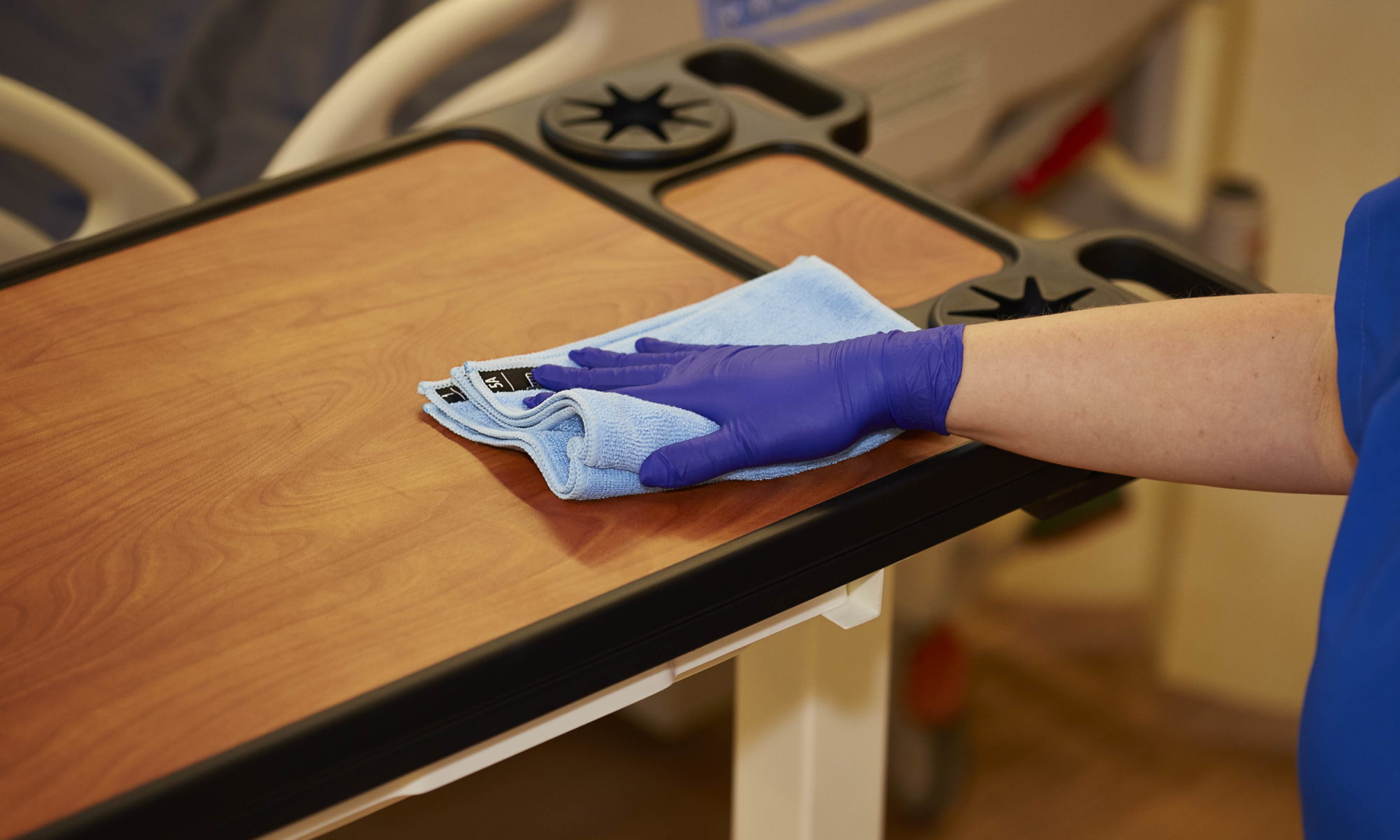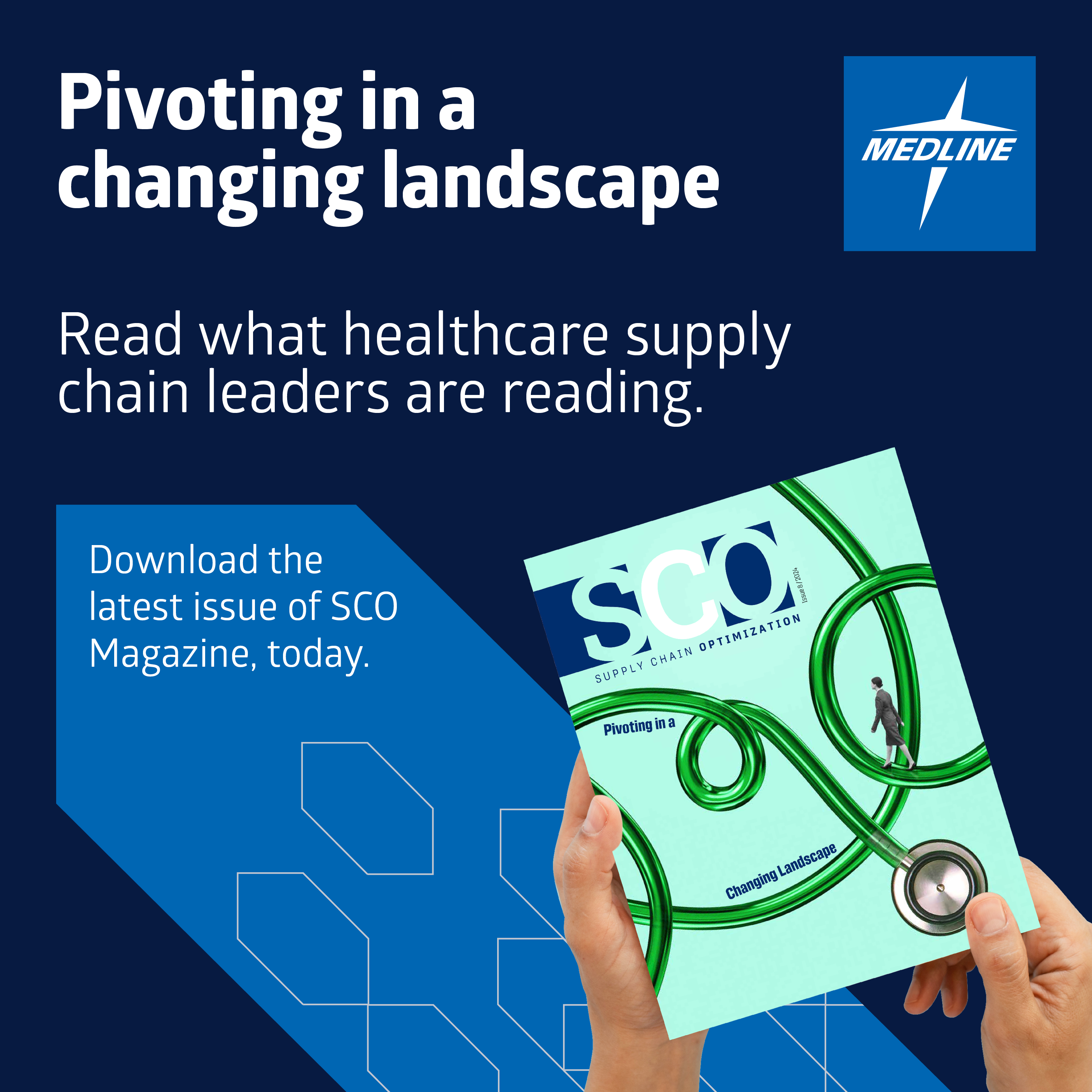State of the Industry Conversation: Environmental Cleaning’s Role in Infection Prevention

By Medline Newsroom Staff | February 25, 2020
According to recent data, the operating room–a place where patients are often the most vulnerable to infection–is one of the most challenging rooms of the hospital to keep clean. In fact, nearly 75 percent of surfaces in the OR are missed during cleaning, compared to 50 percent in patient rooms.
These glaring statistics are particularly concerning given the rise of multidrug resistant organism (MDROs), which are bacteria and fungi that are resistant to one or more antimicrobial agents. MDROs threaten to undermine public health, but enhanced environmental cleaning is one of many interventions that can help control MDROs.
To learn more about the link between environmental cleaning and infection prevention, The Medline Newsroom spoke with Medline’s Director of Product Management for Environmental Services solutions Megan Henken. Henken, a member of Medline’s Infection Prevention squad, is a driving force in product innovation at Medline meant to help healthcare providers deliver more effective patient outcomes.
Recent data about the number of surfaces frequently missed in OR cleaning is quite startling. What makes the OR so challenging to rid of pathogens?
On average, there are more than 14 million surgical procedures in operating rooms a year. When it comes to cleaning and disinfecting the room, teams are working with a relatively short turnover time to prepare for the next patient, and about half the time of the expected turnover for a patient room. Also, there are usually multiple people trying to clean the room in an effort to turn it over quickly, but as a result, there is often confusion on who is responsible for cleaning what. This can leads to a lot of surfaces being missed or forgotten because everyone assumed that the other person is taking care of it.
Can having multiple people in charge of cleaning negatively impact room turnover?
With limited amount of turnover time, having multiple people clean the room can be a positive. The key, though, to better practice is standardization. We have to think of it as a collaboration and make sure everyone has specific responsibilities to reduce the risk missing a surface. If hospitals train everyone on standardized processes, you have a higher level of confidence that any person can go into any room and know how to clean every surface.
There’s a common misperception that cleaning and disinfecting are synonymous in healthcare. What goes through your mind when you hear that?
A lot of people think they are same thing, but cleaning is removing soil from the surface. Disinfection is something more: It means you are killing pathogens, destroying what is on the surface. Ideally, you want a combination of cleaning and disinfection, and many disinfectants note best practice on the label. Many instructions dictate to remove gross soils prior to disinfecting.
Infection prevention and the role of environmental services to keep patients safe is a loaded topic. What else is your team focused on right now as it relates to emerging pathogens?
Candida auris (C. auris) is an example of an emerging pathogen that has caught our attention over the past several years. The CDC is concerned about C. auris because it is often multi-drug resistant, is difficult to identify with standard laboratory methods, and has caused outbreaks in healthcare settings. Alarmingly, some C. auris strains are developing resistance to several standard disinfectants. A few years ago we closely followed hospitals in New York and Chicago that had trouble combatting C. auris. We monitored the progress on EPA testing methods so that, as soon as it was made available, we were one of the first in line to get our Micro-Kill Bleach Germicidal Bleach Wipes tested. Earlier this year, we were officially able to market the wipes as the first EPA-approved product on market available to hospitals and clinics fighting multidrug resistant fungus. We continue to partner closely with our laboratory to better understand Candida auris and how its impact can be mitigated.
How does all this help drive Medline’s approach to product innovation?
It is essential to pay attention to conversations through industry associations, customer conversations and even traditional media outlets to understand hot topics affecting our customers.
As part of our deep dive into industry conversations, we are extremely passionate about understanding our customers’ challenges so we can provide sound recommendations to drive outcomes. It is critical that we feel and see for ourselves. Recently, more than 40 Medline reps from across the country gathered at our headquarters for a hands-on training. While in our mock OR, we tasked our reps with prioritizing which surface areas should be cleaned, in what situations, and in what order. This helped open their eyes to all the different surfaces area within the operating room and the possible challenges our customer faces with cleaning.
Additionally, our research and development lab group at Medline is engaging in microbiology and infection prevention events to learn and help lead the development in new products.
Learn more about Medline’s comprehensive solutions for environmental cleaning.
Medline Newsroom Staff
Medline Newsroom Staff
Medline's newsroom staff researches and reports on the latest news and trends in healthcare.

